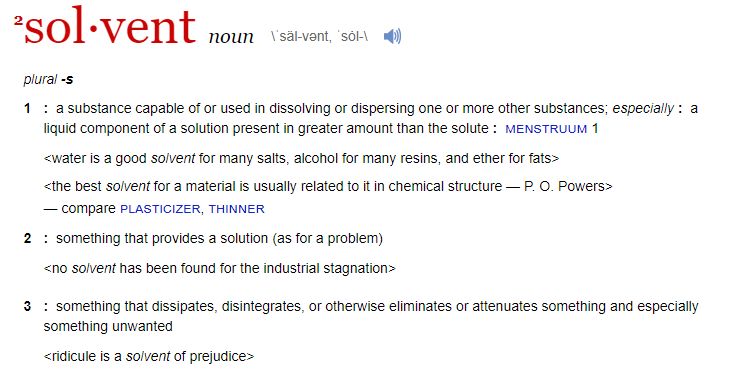The textbook gives me a following sentence. Although, I could understand probably, since the appearance of the word was so sudden, that I get confused a bit
(The textbook is mainly talking about chemical solution/solvent aka chemical change issues as a whole.)
Solution is the mixture of a solute in a solvent. The dissolved substance is the solute, and the substance that brings about the dissolving action is the solvent. When a lump of sugar is placed in water, tiny particles of sugar break off an mix with the water until the lump finally disappears. The sugar dissolves in the water and formed a sugar solution.
Solutions are so common that we may overlook their importance. Plants that furnish our food get their nourishment from minerals dissolved in the soil, and our digestive juices must dissolve our foods before they can be absorbed into the bloodstream. Spots and strains are removed from clothing by applying the proper solvent.
There are 2 prerequisites and 2 questions
Prerequisites
The first raised part of "solvent" fits with the definition 1 in an image below in my opinion.
The last raised part of "solvent" would be perhaps categorized in definition 2.
Questions
Would my understanding in prerequisite 2 correct?
If 1 were correct, in a context as a whole, would it be a good idea for the writer to use the same "solvent"? (To me it sounds a bit abrupt.)

